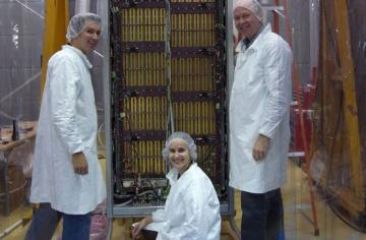New research casts doubt on basic physics theory
It may not have the same sex appeal as the discovery of the elusive Higgs boson, but there’s another related news story that recently rocked the particle physics world. And it too has a strong University of Victoria connection.
New analysis of data collected from the international BaBar experiment at the SLAC National Accelerator Laboratory in California may have found a flaw in the reigning theory of how the universe works on subatomic scales
“The Standard Model is extremely successful in describing measurements involving fundamental particles, such as quarks and leptons,” says UVic physicist Dr. Michael Roney. “But there are physical phenomena that lie outside the purview of the model for which there is no cogent theoretical description.”
Roney is spokesperson for the BaBar experiment, which from 1999 to 2008 collected data from the collisions of electrons and positrons (anti-electrons). BaBar involves 400 physicists from 72 universities and a dozen countries, and continues to mine data under Roney’s leadership.
The new analysis reveals that a certain type of particle decay happens more often than the Standard Model says it should. “It’s exciting,” says Roney, “but before we can claim an actual discovery, other experiments have to replicate it and rule out the possibility this isn’t just a statistical fluctuation.”
Confirmation of the finding would allow physicists to move beyond the Standard Model, says Roney, who as part of the Victoria Subatomic Physics and Accelerator Centre at UVic, focuses much of his work on new fundamental physics effects that are outside the scope of, or in contradiction with, the Standard Model.
In this story
Keywords: particle physics, research
People: Michael Roney

